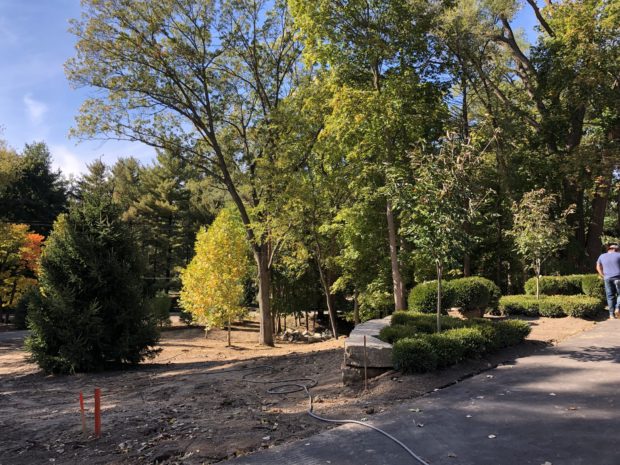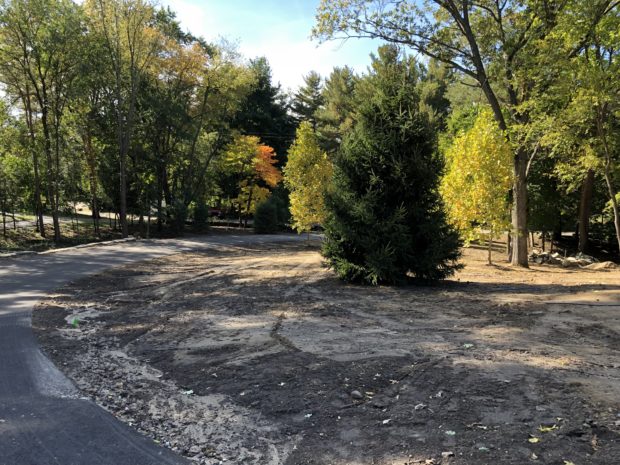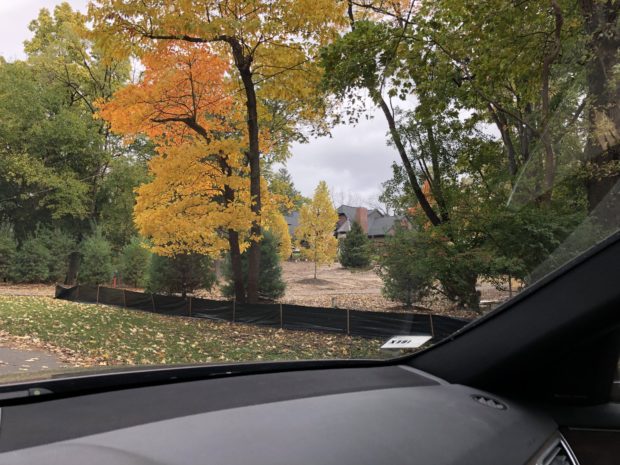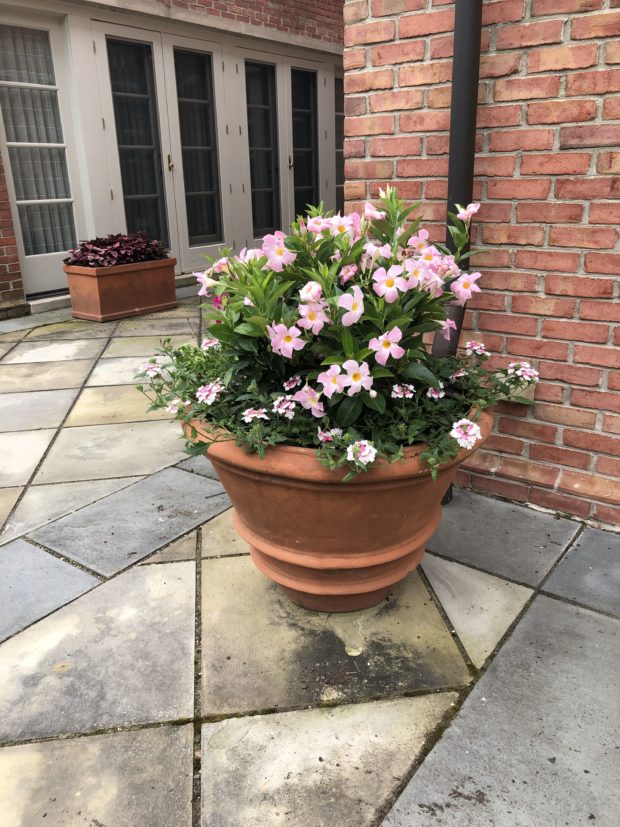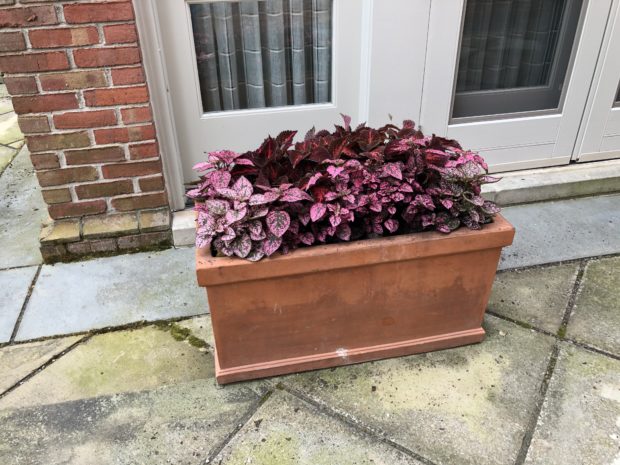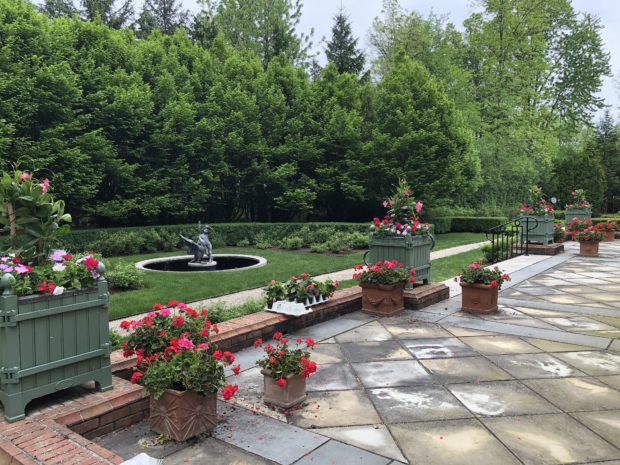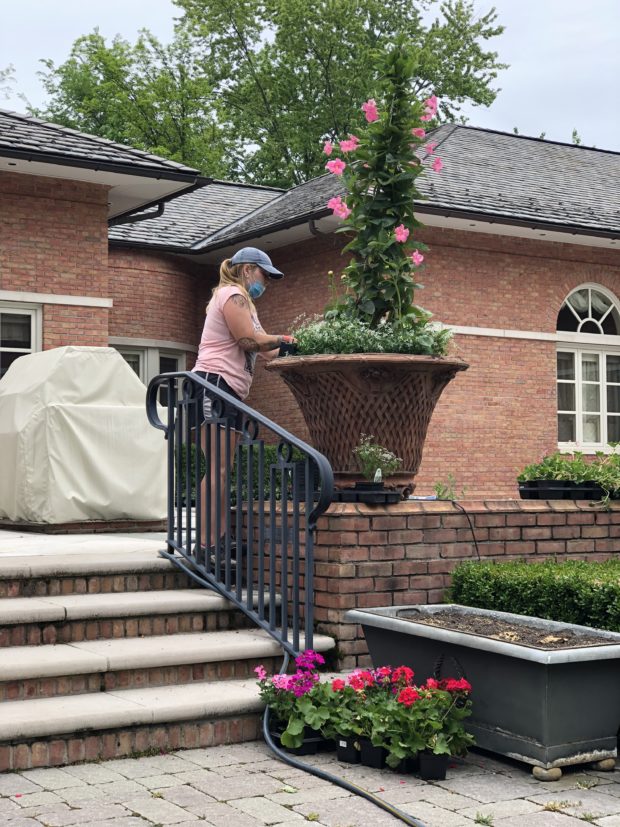 Just think about it. The summer gardening season begins to wane, and every passionate gardener begins to fret. The letting go is not easy. I know I dig in my heels and ignore the obvious signs of the passing. Letting go is actually incredibly difficult. Just the thought that close to a year will pass before summer comes again is just cause for a gardener’s grief. But nature has a way of scooping up the remains of the previous season, and recasting them in a dramatic reinvention of the season to come. Any gardener who has observed the process of leaves abandoning their juicy green for a whole host of fiery fall colors understands this: The evolution of a summer season into the fall is an extraordinary pageant. The anticipation of a new and exciting season to come helps mitigate the loss of the old one.
Just think about it. The summer gardening season begins to wane, and every passionate gardener begins to fret. The letting go is not easy. I know I dig in my heels and ignore the obvious signs of the passing. Letting go is actually incredibly difficult. Just the thought that close to a year will pass before summer comes again is just cause for a gardener’s grief. But nature has a way of scooping up the remains of the previous season, and recasting them in a dramatic reinvention of the season to come. Any gardener who has observed the process of leaves abandoning their juicy green for a whole host of fiery fall colors understands this: The evolution of a summer season into the fall is an extraordinary pageant. The anticipation of a new and exciting season to come helps mitigate the loss of the old one.
 We plant lots of containers in celebration of the fall season. I am often asked about how long they will last. That question always seems tinged with an unspoken belief that the fall is a shorter season than the summer. Just as the winter season is perceived to be longer than the spring season that follows it. How gardeners adore the summer and dislike the winter. What comes in between the two is short lived, and therefore inconsequential. Well in fact, each season lasts a full three months, which is certainly a long enough time to enjoy them all. Though a beautiful landscape matures and provides interest in every season over many years, planting seasonal pots and displays are satisfying in the moment to create and enjoy. Beautifully planted and tended containers enhance any given season in a very personal way. Suffice it to say that Detroit Garden Works had 2800 various cabbage and kale grown for our fall season-we have very few left.
We plant lots of containers in celebration of the fall season. I am often asked about how long they will last. That question always seems tinged with an unspoken belief that the fall is a shorter season than the summer. Just as the winter season is perceived to be longer than the spring season that follows it. How gardeners adore the summer and dislike the winter. What comes in between the two is short lived, and therefore inconsequential. Well in fact, each season lasts a full three months, which is certainly a long enough time to enjoy them all. Though a beautiful landscape matures and provides interest in every season over many years, planting seasonal pots and displays are satisfying in the moment to create and enjoy. Beautifully planted and tended containers enhance any given season in a very personal way. Suffice it to say that Detroit Garden Works had 2800 various cabbage and kale grown for our fall season-we have very few left.
 For some, the fall season is a favorite. Hot sticky weather is a thing of the past. The air is crisp, and breathable. The play of long low shadows against the landscape is especially beautiful. And of course there is the color. The most gorgeous in full bloom perennial garden in June is glorious, but a landscape in full fall color is spectacular. There is vibrant color everywhere you look, from the tops of the tallest trees, to the hostas coloring up on the ground. The evergreens in the landscape stand out in strong and stoic contrast. The last hurrah is nature’s most beautiful opera. I hear trumpets, don’t you? We try to express the bounty of the harvest with lavishly constructed centerpieces, and a variety of cabbage and kale grown to enormous size. Overstuffed pots are a very good look this time of year.
For some, the fall season is a favorite. Hot sticky weather is a thing of the past. The air is crisp, and breathable. The play of long low shadows against the landscape is especially beautiful. And of course there is the color. The most gorgeous in full bloom perennial garden in June is glorious, but a landscape in full fall color is spectacular. There is vibrant color everywhere you look, from the tops of the tallest trees, to the hostas coloring up on the ground. The evergreens in the landscape stand out in strong and stoic contrast. The last hurrah is nature’s most beautiful opera. I hear trumpets, don’t you? We try to express the bounty of the harvest with lavishly constructed centerpieces, and a variety of cabbage and kale grown to enormous size. Overstuffed pots are a very good look this time of year.
 David is every bit of 6′ 3″ tall. That gives you an idea of the size of his creations pictured above. We have added some cream colored faux seed head picks and orange preserved eucalyptus to the mix. Bunches of bare sticks provide a framework to hold all of the other elements aloft. I have no idea how much these pieces weigh, but they are too heavy for me to pick up. They will be secured in the container with steel rebar and concrete wire.
David is every bit of 6′ 3″ tall. That gives you an idea of the size of his creations pictured above. We have added some cream colored faux seed head picks and orange preserved eucalyptus to the mix. Bunches of bare sticks provide a framework to hold all of the other elements aloft. I have no idea how much these pieces weigh, but they are too heavy for me to pick up. They will be secured in the container with steel rebar and concrete wire.
 The centerpieces are scaled appropriately to the size of the container. Large containers can make a huge statement in the landscape, but to fill them takes lots of material.
The centerpieces are scaled appropriately to the size of the container. Large containers can make a huge statement in the landscape, but to fill them takes lots of material.
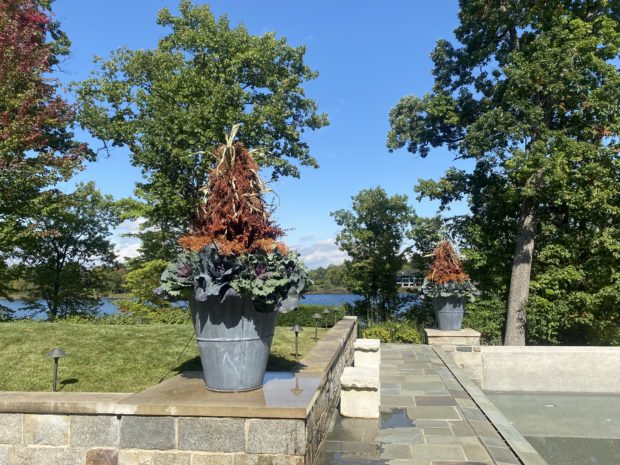 The centerpieces that seemed so large in the garage shop just seem proportional to the pots.
The centerpieces that seemed so large in the garage shop just seem proportional to the pots.
 Not every centerpiece is of such a grand scale, and some container placements are in more intimate locations. But a smaller scale does not need to imply less impact.
Not every centerpiece is of such a grand scale, and some container placements are in more intimate locations. But a smaller scale does not need to imply less impact.
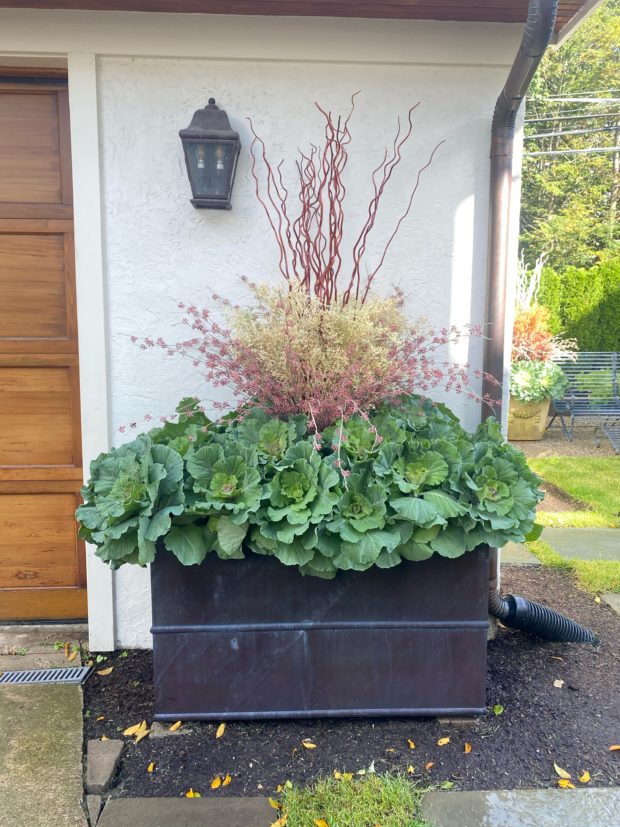 Once these Osaka Pink cabbage color up, this container will come in to its own. The centerpiece is constructed of mahogany colored curly willow sticks, and two kinds of faux picks. Rob takes great pains to order in picks that have some reference to the garden. Some have very natural shapes, and others sport reproductions of seed heads that are remarkably evocative of the season. It is entirely conceivable that the cabbages will look fine in to January, as they are extremely cold tolerant. An ornamental cabbage in full color and coated with frost is quite beautiful.
Once these Osaka Pink cabbage color up, this container will come in to its own. The centerpiece is constructed of mahogany colored curly willow sticks, and two kinds of faux picks. Rob takes great pains to order in picks that have some reference to the garden. Some have very natural shapes, and others sport reproductions of seed heads that are remarkably evocative of the season. It is entirely conceivable that the cabbages will look fine in to January, as they are extremely cold tolerant. An ornamental cabbage in full color and coated with frost is quite beautiful.
 This centerpiece is much more fanciful. This is for a household with children who are all in for Halloween.
This centerpiece is much more fanciful. This is for a household with children who are all in for Halloween.
 The Halloween decor will look great with these pots.
The Halloween decor will look great with these pots.
 This centerpiece is comprised of a bluish green preserved eucalyptus, arching stemmed picks studded with blue beries, and some rather stunning picks in the center representative of clematis seed heads.
This centerpiece is comprised of a bluish green preserved eucalyptus, arching stemmed picks studded with blue beries, and some rather stunning picks in the center representative of clematis seed heads.
 Even up close, all of the elements are convincing.
Even up close, all of the elements are convincing.
 fall pots garnished with Ruby Queen cabbages
fall pots garnished with Ruby Queen cabbages
 It is a tribute and a indication of David’s great skill that is is able to achieve great height from bunches of bleached willow twigs that come 4 feet tall. It takes lots of patience and careful construction. In spite of all of the technical issues, he is able to create fall displays that appear incredibly graceful and natural.
It is a tribute and a indication of David’s great skill that is is able to achieve great height from bunches of bleached willow twigs that come 4 feet tall. It takes lots of patience and careful construction. In spite of all of the technical issues, he is able to create fall displays that appear incredibly graceful and natural.
 fall container with Rosebud cabbage
fall container with Rosebud cabbage
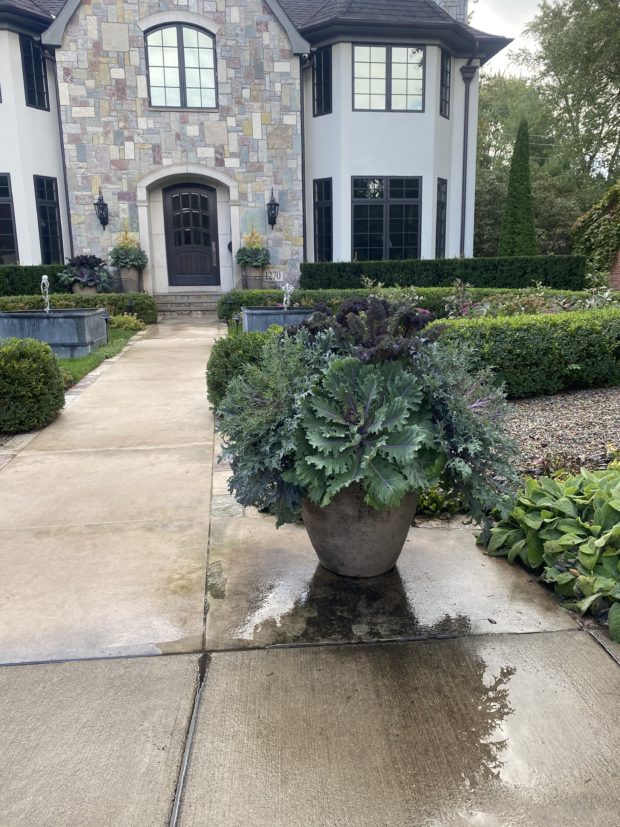 Not all of our fall pots have centerpieces. There are places where they would not add much to the mix. These contemporary Belgian stoneware pots frame the view of the landscape and the front porch from the sidewalk. Everything about the beauty of this pot has to do with beautifully grown material whose care is entrusted to Lisa. She makes sure that the plants get adequate water and food. And the careful placement and intertwining of very large plants handled by Karen and Natasha. The leaves of mature cabbage especially can crack if improperly handled. They make what is a difficult planting look effortless.
Not all of our fall pots have centerpieces. There are places where they would not add much to the mix. These contemporary Belgian stoneware pots frame the view of the landscape and the front porch from the sidewalk. Everything about the beauty of this pot has to do with beautifully grown material whose care is entrusted to Lisa. She makes sure that the plants get adequate water and food. And the careful placement and intertwining of very large plants handled by Karen and Natasha. The leaves of mature cabbage especially can crack if improperly handled. They make what is a difficult planting look effortless.
 To follow are a few pictures of some of our fall container arrangements. I hope you enjoy looking at them as much as we enjoy creating them. There is no need for containers to sit empty, once the summer season wanes.
To follow are a few pictures of some of our fall container arrangements. I hope you enjoy looking at them as much as we enjoy creating them. There is no need for containers to sit empty, once the summer season wanes.
Bewitching!









